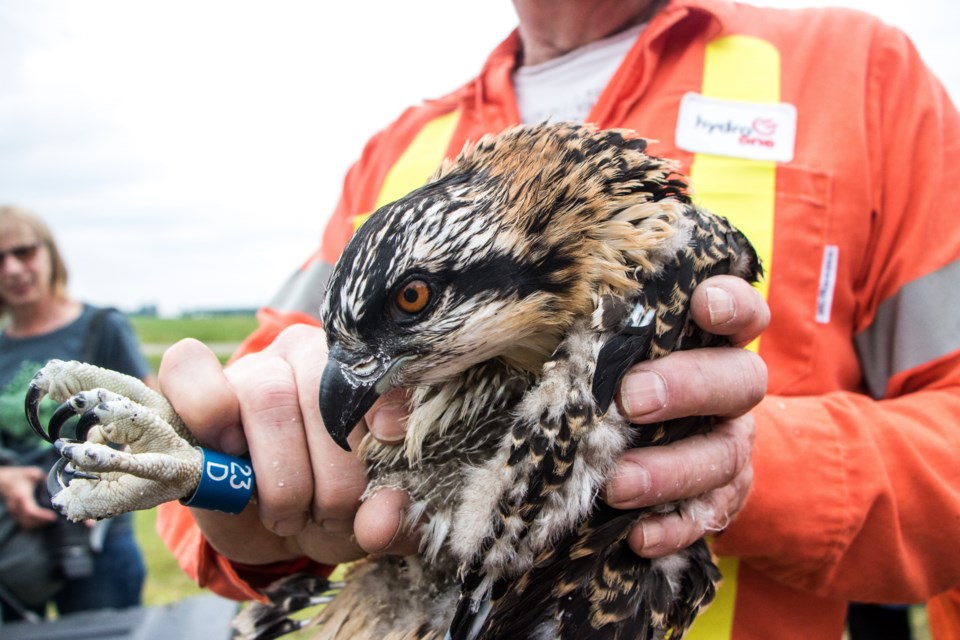After his annual trip visiting osprey’s nests throughout Wellington County, a local bird bander says he has noticed some troubling issues.
The wide-winged bird of prey, also known as the fish hawk, is once again using Ontario as one of its key breeding grounds - but that wasn’t always the case.
David Lamble is a master bird bander and has been banding the local osprey population since its arrival back in the area nearly 20 years ago. This year he noticed there were both fewer chicks and fewer nests in our area than in past years. He suggests that the cold weather in the spring played a role in the reduced numbers.
"We had one nest that was totally empty and not all the nests had three chicks in them," said Lamble. "The actual numbers are less than I would have expected."
According to Friends of the Osprey, an Ontario based group that educates the public about ospreys, these birds of prey were once very frequent visitors in the area, but the use of pesticides in the 1960s and ‘70s virtually wiped them out of Ontario. At that time, fewer than one chick per nest was being born.
With new regulations on chemical storage and use, the birds are now considered a species at least risk of extinction and their return is an indicator of waterway health.
Twenty years ago, the only pair locally Lamble could band was located at Luther Marsh. He now bands at least 11 different nests in the area and knows there are more he can’t get to. He says many of his birds don’t come back here to breed and travel long distances in their life.
"The furthest I know about is the one that winters over in Argentina, as far as nesting, Minnesota is the furthest from here," said Lamble.
He suggests that if you want to help the population and see these birds in your backyard, you can build a large elevated platform if you are near water and start it off with a few twigs on top. He has a rule he applies to everything he does with birds and says it also applies here.
“Remember birds don’t read manuals, so often times what we think we know we don’t really know.”
If you see a banded bird you can report it to 1-800-327-BAND to help scientists track them.



